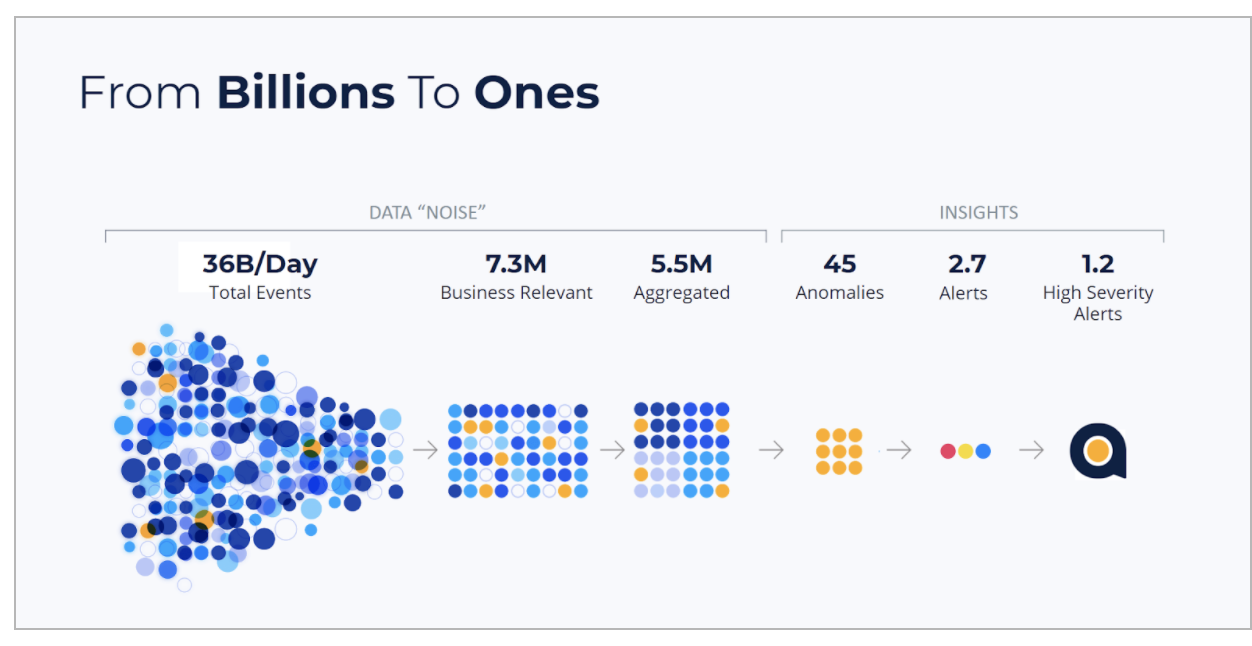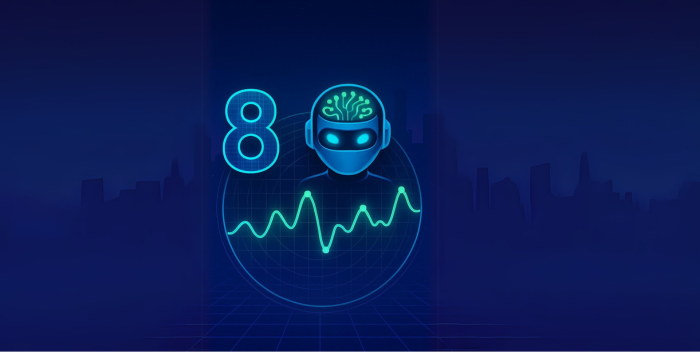As the world has undergone massive changes in the past year, many organizations have recognized that it’s more important than ever to shift away from being reactive about their data.
For example, as more and more people work from home, telecom operators that were reactive in detecting anomalies and resolving incidents have experienced network-wide incidents and downtime. Similarly, retail companies that were reactive about their in-store demand forecasting have faced challenges this year.
The point is — regardless of the business or industry you’re in, given the volume and complexity of data creation today, the traditional way of analyzing data reactively is no longer sufficient. Setting static thresholds for anomaly detection and manually adjusting them simply doesn’t work when the entire global economy changes.
Solving these challenges head-on are AI analytics technologies driving the next generation of business intelligence. With them comes a level of scale, speed, automation and insights that is enabling proactive data analytics within business. Read on to learn about AI analytics driving this data analysis, the use cases and the business impact.
What is Proactive Analytics?
Proactive analytics is an IT term that refers to taking an active approach to active business monitoring in order to prevent incidents from escalating. This involves monitoring 100% of an organization’s data in real time, autonomously adjusting thresholds for and sending automatic alerts as early as possible so you can resolve problems before they negatively impact the bottom line.
Proactive analytics applies to the entire process of analysis — from data collection, all the way to insights and forecasting — and uses machine learning to achieve the speed, accuracy, and efficiency that’s required in the data-rich world.
One of the core differences of proactive analytics is that it’s able to automatically learn the unique behavior of each metric on its own. This key difference allows for a much greater level of granularity in the analytics process. In other words, with an autonomous analytics system you can identify issues as they happen, and proactively make changes before they dramatically impact your business.

In contrast, traditional analytics is highly reactive and consists of setting static thresholds, dashboards, and alerts. Without the ability of a machine to learn each individual metrics’ normal behavior, traditional statistics-based analytics lack the necessary accuracy for effective monitoring and often leads to false positives and false negatives.
In today’s data-driven world, however, the reality is that many businesses need to track and monitor thousands of metrics and KPIs and often billions of events each day.
With this volume of data generation and the rapidity in which conditions change, setting static alerts and analyzing data after the fact either leads to missing critical incidents or triggering alert storms.
Now that we know what proactive analytics is at a high-level, let’s look at the technology driving it: AI and machine learning.
How AI/ML are Driving Proactive Analytics
AI and machine learning are undoubtedly crucial factors in the shift to proactive analytics for several reasons. As discussed in Preventing eCommerce Pricing Glitches with AI-Based Anomaly Detection, proactive anomaly detection can assist businesses in the following ways:
- Automatically learn normal behavior: If, for example, you’re in the eCommerce retail business, the data is highly seasonal, meaning it is constantly changing at different times of the hour, day, and month. AI-based proactive analytics can adapt to this dynamic behavior in real-time.
- Identify and alert to abnormal activity: When you’re tracking thousands of metrics, being able to identify and alert true anomalies faster than static thresholds can have a significant impact on the bottom line.
- Anomaly configuration: In addition to autonomous monitoring, known anomalies can be configured to only trigger alerts based on certain thresholds such as delta, significance score, length, severity, influencing metrics, and so on.
- Metric correlation: By pairing a real-time alert with root-cause analysis, company’s gain additional insight and context into each incident, all of which can dramatically reduce time to resolution.
Now that we know how AI and machine learning can assist in the context of proactive analytics, let’s review several use cases.
Use Cases: AI for Proactive Analytics
Since proactive analytics is all about detecting anomalies and automatically making adjustments in real-time, one of the best applications for companies is demand forecasting, which is the process of predicting future demand for a product or service based on a number of factors.
As you can imagine, having more accurate demand forecasts has a tremendous impact on a company’s cash flow, planning capabilities, and customer experience.
Two specific use cases that our highlighted in our guide on demand forecasting include:
- Retail inventory planning: The retail industry is highly sensitive to changes in both consumer demand and supply chains. The challenge of forecasting demand often involves taking in countless KPIs such as seasonality, geographic location, market conditions, and so on. As mentioned, being able to take into consideration all these data points and produce more accurate forecasts is incredibly valuable for retailers.
- Optimizing staffing to improve the customer experience: Another example of proactive analytics is being able to accurately forecast the staffing requirements based on customer needs. Again, this is a complex forecast that takes into consideration many factors such as the time of day, location, and more. Accurate forecasts not only help improve labor costs for a company, but also enhance the customer experience.
Summary: From Reactive to Proactive Analytics
As discussed, the volume and velocity of data creation today has made analytics much more complex undertaking, which has resulted in a shift in the underlying approach and technology.
Traditionally, reactive analytics used BI dashboards and relied on static thresholds, although this led to either missing critical incidents or being too sensitive to changes and triggering alert storms.
As the field of AI and machine learning has developed, the shift AI-based autonomous analytics has allowed companies to shift from being reactive in nature to a proactive approach. This AI-based analytics allows companies to automatically learn the normal behavior of each individual metric, identify abnormal activity in real-time, and provide insights about metric correlation.
All this results in companies experiencing faster time to resolution of critical incidents, an enhanced customer experience, and improvements to their bottom line.





